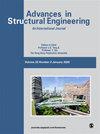可解释的自动驾驶决策模型
IF 2
4区 工程技术
引用次数: 0
摘要
模拟人类驾驶员的交互行为对于实现安全的完全自动驾驶汽车至关重要。遗憾的是,目前自动驾驶汽车采用的大多数决策系统都依赖于复杂的深度神经网络模型,这些模型就像黑盒子一样,推理不透明,阻碍了人类的解读。借鉴心理学家认可的需求理论和驾驶相关的心理学研究,我们总结了驾驶员行为背后的五种基本驾驶需求:安全、支配、成就、秩序和相关性。利用通用认知架构中的行为选择模块,我们提出了一个明确为自动驾驶汽车量身定制的决策模型,由三个不同的模块组成:需求评估、动机生成和行为选择。我们使用基于 Unity 自主开发的 2D 模拟器进行了实验,以评估所提出的模型。实验结果直观地展示了自动驾驶汽车的动机和行为。该模型在处理常规任务(如独立完整的驾驶任务、交叉路口导航和多辆车之间的操纵)方面表现出了卓越的能力。本文章由计算机程序翻译,如有差异,请以英文原文为准。
An interpretable decision-making model for autonomous driving
Modeling the interactive behavior of human drivers is essential for achieving safe and fully autonomous vehicles. Unfortunately, most decision-making systems employed in current autonomous vehicles rely on complex deep neural network models that function as black boxes with opaque reasoning that hampers human interpretation. Drawing upon the needs theories endorsed by psychologists and driving-related psychological research, we summarize five fundamental driving needs underlying the driver’s behavior: safety, dominance, achievement, order, and relatedness. Leveraging the behavior selection module from general cognitive architectures, we propose a decision-making model explicitly tailored for autonomous vehicles, comprising three distinct modules: needs assessment, motivation generation, and behavior selection. We conducted experiments to evaluate the proposed model using a self-developed 2D simulator based on Unity. The results intuitively visualized the motivation and behavior of self-driving vehicles. This model demonstrates remarkable proficiency in handling routine tasks, such as independent and complete driving tasks, intersection navigation, and maneuvering among multiple vehicles.
求助全文
通过发布文献求助,成功后即可免费获取论文全文。
去求助
来源期刊

Advances in Mechanical Engineering
Engineering-Mechanical Engineering
自引率
4.80%
发文量
353
期刊介绍:
Advances in Mechanical Engineering (AIME) is a JCR Ranked, peer-reviewed, open access journal which publishes a wide range of original research and review articles. The journal Editorial Board welcomes manuscripts in both fundamental and applied research areas, and encourages submissions which contribute novel and innovative insights to the field of mechanical engineering
 求助内容:
求助内容: 应助结果提醒方式:
应助结果提醒方式:


